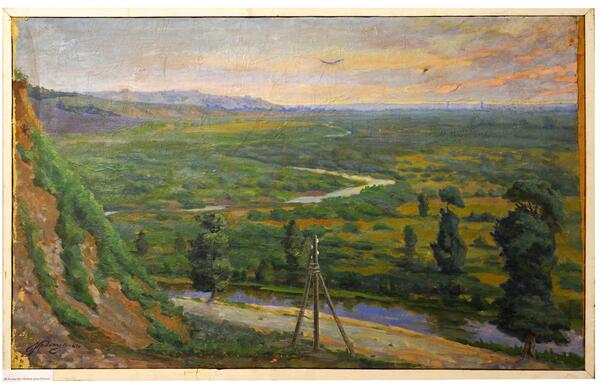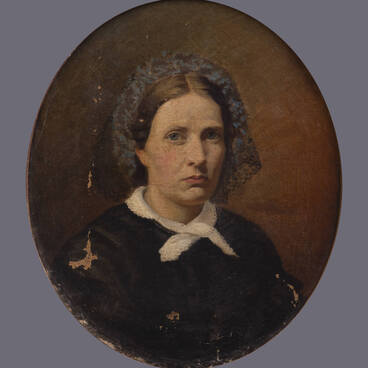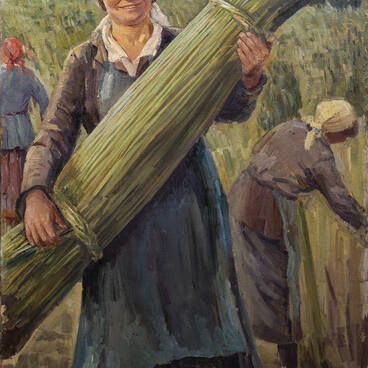Ivan Alekseyevich Tolmachev (1924–1994) was a veteran of the Great Patriotic War, the founder and first director of the Starooskolsky Children’s Art School. He was born in Verkhne-Chufichevo village of Starooskolsky district. In 1940 Ivan Tolmachev entered Penza Art College, but completed only the first course when the war broke out. Ivan Alekseyevich returned to his hometown and worked as a junior researcher at the Museum of Local Lore. In December, 1943 he was mobilized in Red Army and served as the artist of an artillery regiment. Subsequently, the years of service were reflected in his paintings. After the war Ivan Tolmachev finished art school and worked as a teacher of drawing in the city schools. Then he led the children’s art studio — at first on a voluntary basis; then in 1969 he founded an art school. He was repeatedly awarded certificates of merit at various levels, and received the title of Honored Worker of Culture of the RSFSR.
The researchers of Ivan Tolmachev’s work believe that his painting “The Oskol River Floodplain” depicts the settlements surrounding Stary Oskol. The town was founded as a strong fortress on the route of Crimean and Nogai Tatars in 1593. The system of settlements around the main territory of the city was developed much later, in the 17th — early 18th centuries. It was then that Kazatskaya, Gumny, Streletskaya, Pushkarskaya and other settlements appeared.
The painting is a landscape in oil on canvas. In the foreground, the left side of the painting shows a chalk slope, in this area the hills are formed by rocks of Cretaceous age — chalk and limestone. Beside the dirt road is a tripod-shaped power line pole. The river reflects the sky and the vegetation along its banks.
The Oskol — the largest left tributary of the Northern Donets — flows through the Belgorod and Kursk regions of Russia and in the Kharkov region of Ukraine. The meandering course of the river is depicted in the center of the picture. In the far left background, on the horizon line, is a chalk hill with conventionally marked town buildings, presumably the city of Stary Oskol.
The researchers of Ivan Tolmachev’s work believe that his painting “The Oskol River Floodplain” depicts the settlements surrounding Stary Oskol. The town was founded as a strong fortress on the route of Crimean and Nogai Tatars in 1593. The system of settlements around the main territory of the city was developed much later, in the 17th — early 18th centuries. It was then that Kazatskaya, Gumny, Streletskaya, Pushkarskaya and other settlements appeared.
The painting is a landscape in oil on canvas. In the foreground, the left side of the painting shows a chalk slope, in this area the hills are formed by rocks of Cretaceous age — chalk and limestone. Beside the dirt road is a tripod-shaped power line pole. The river reflects the sky and the vegetation along its banks.
The Oskol — the largest left tributary of the Northern Donets — flows through the Belgorod and Kursk regions of Russia and in the Kharkov region of Ukraine. The meandering course of the river is depicted in the center of the picture. In the far left background, on the horizon line, is a chalk hill with conventionally marked town buildings, presumably the city of Stary Oskol.



